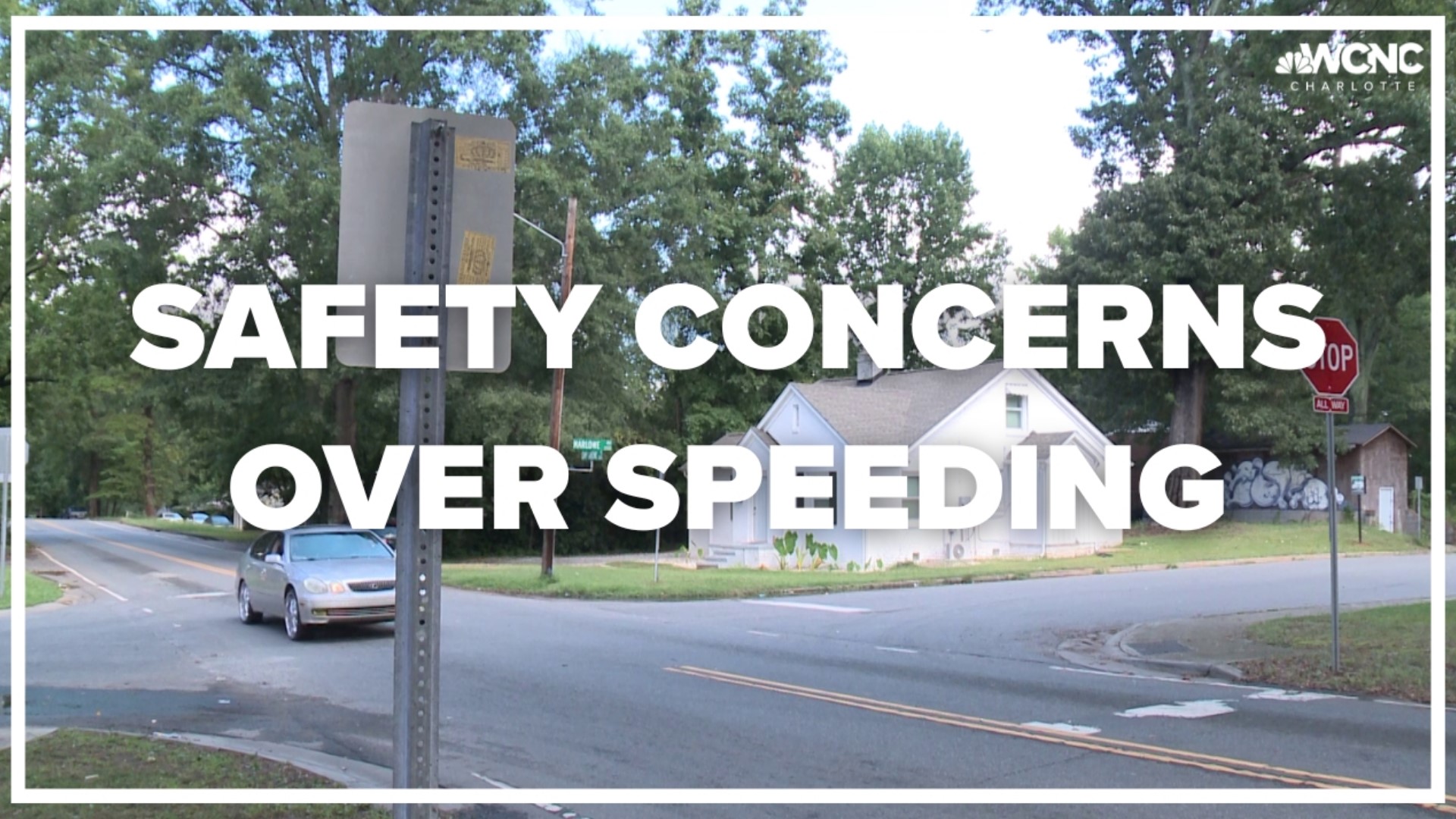CHARLOTTE, N.C. — Residents in the historic Camp Greene neighborhood have shared safety concerns over speeding drivers in the area.
People who live off Camp Greene Street said cars regularly speed down this neighborhood, and even getting out of the driveway can be challenging and dangerous because there are so many drivers who don’t obey the rules of the road.
“People just fly down this road like there’s no problem,” said Daniel Hamby, who has lived in the neighborhood for about five years. “I’ve seen wrecks happen here before and some are really bad."
The speed limit on Camp Greene Street off of Freedom Drive is 30 mph. But Hamby said too often, drivers don’t abide by it.
“There’s this four-way intersection stop here, and very often we will be sitting on the porch and people will fly through like there is nothing here,” he said.
Valarie Hood works at Little Debbie’s Child Development Center on the same road, and her concerns echoed Hamby's.
“We always have to keep our eye on our children at all times because you know someone might run that stop sign there may be an accident. You just never know what could happen,” she said.
Hood said more needs to be done to slow drivers down.
“I would like to see people obeying the law,” she said. “Stopping and no speeding -- this is an area where people live and have businesses.”
Hamby also said options exist that could help solve the issue.
“Like speed bumps would be great, or adding a light might help," Hamby offered as examples.
WCNC Charlotte has reached out to the Charlotte Department of Transportation (CDOT) for more information about the traffic on this particular road.
If you have speeding concerns in your neighborhood, the best thing to do is to call 311 and ask for neighborhood traffic calming. You can request to have a traffic study done to see if safety measures can be added to your area. This can also be done through the CLT+ app, and it goes through the City of Charlotte’s Neighborhood Street Calming Program.
“The analysis to do neighborhood traffic calming takes about six weeks. By the time we get the counts back with the speed and the volumes those typically take roughly a month,” said Angela Berry, a traffic safety manager at CDOT.
She said the data gathered from those studies is needed to see if the street qualifies for a traffic calming remedy like a speed bump, multi-way stop, or even both.
One of the requirements for a multiway stop is a volume of 600 cars per day. The same is needed to add a speed bump. The volume needs to be much higher to add both.
“When you combine the two, the numbers adjust so the volume goes up to 1,500 vehicles per day,” said Berry.
The request is also passed on to the fire department because Berry said you don’t want traffic measures to delay emergency vehicles.
“The Charlotte Fire Department’s response times are very important to them. They are held to a very high standard," she said, "and I just want to make sure that I have buy-in from them before we add any additional measures."
Once a traffic calming device is selected, neighbors are alerted and have 45 days to share any opposition against it.
As of June 13, 2022, the city has installed 675 multi-way stops, nearly 2000 speed humps, and 36 roundabouts across Charlotte. Another 160 requests are in progress.
“Just know that we take each request very seriously,” said Berry. “We try to be as thorough and thoughtful about how we utilize the dollars day and trust to us as taxpayers.”
The process of installing a traffic calming device can take anywhere from 30 days to four months to install, depending on what it is. Speed bumps take longer because they are only installed once a year.
CDOT said it prioritizes requests based on speed levels and the number of people and cars that use the roadway.
Contact Jesse Pierre at jpierrepet@wcnc.com or follow her on Facebook, Twitter and Instagram.

